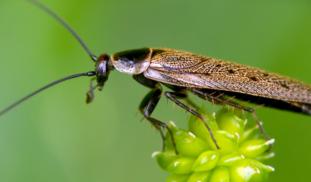Please wait...
About This Project
Most of the species on earth are in the tropics, but where did all this biodiversity come from? We want to study how certain landscape features contribute to evolutionary diversification in a tropical savannah. By comparing populations of cockroaches across the savannah we can understand the forces driving their evolution. Why cockroaches? There are a huge diversity (>4500 species) of cockroaches globally and we know almost nothing about them.

Browse Other Projects on Experiment
Related Projects
How do polar bears stay healthy on the world's worst diet?
Polar bears survive almost entirely on seal fat. Yet unlike humans who eat high-fat diets, polar bears never...
Uncovering hidden insect diversity associated with a likely undescribed gall-forming midge
Does a likely undescribed species of gall-forming midge (pers. comm. Ray Gagné) on Eriodictyon plants (Yerba...
Macrofungi of the California archipelago
The eight islands of the California Archipelago are a well-studied biodiversity hotspot — but we know almost...





